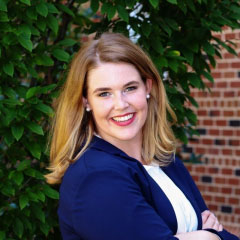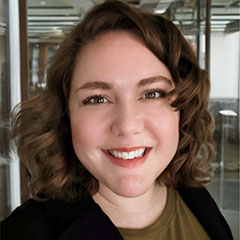At a glance
Compared to other teachers in the same district, teachers that participate in Next Education Workforce™ team-based staffing models are more likely to say they would recommend teaching as a profession and plan to still be teaching in five years. These teachers on teams also received higher teacher evaluation ratings than non-teamed teachers.
What does it mean to participate in teaming?
In Next Education Workforce team-based staffing models, educators can acquire expert depth, explore functional breadth and have opportunities for advancement that don’t necessarily require leaving the classroom. Teams look different in each context, but this approach to team-based staffing models emphasizes educators’ distributed expertise. For too long, teachers have been asked to be all things to all people at all times. Teaming allows educators to showcase their skills in a supportive environment, leading to higher job satisfaction, better student outcomes and a high degree of collaboration, which is difficult to attain in the traditional one-teacher, one-classroom model.
Teachers on Next Education Workforce teams are more likely to recommend teaching
Americans say they would be happier if their child grew up to be a doctor, scientist, architect, nurse, graphic designer, lawyer or senior manager instead of a school teacher. But what do teachers think? We asked them in a survey if they would recommend the teaching profession to a friend, family member or acquaintance. The question was answered on a scale of 0-10 (0 meaning “not at all likely” to recommend teaching and 10 being “extremely likely”).
Teachers participating in Next Education Workforce team-based staffing models were more likely to give a positive recommendation of the profession when compared to teachers in more traditional roles. On average, those on a team would recommend teaching at a rating of 4.7 out of 10, while those not on a team averaged a 3.8 out of 10. This difference is statistically significant, even when controlling for differences in years of experience, race and gender. We note that these ratings overall are still quite low for both groups, highlighting the work we still have to do to improve the teaching profession. But still, the large and statistically significant difference between these two groups is noteworthy and represents meaningful progress to teaching being a more appealing profession.

Additionally, those on a team were more likely to give a high ranking (7 or higher). 35 percent of those on a team said they would recommend teaching at least a 7 out of 10 ranking, while only 22 percent of non-teamed teachers gave a score of at least a 7.

Of those teachers who said they would highly recommend the teaching profession, many mentioned the joy of working with children and making a difference as strong reasons why. Some of those who are working on a Next Education Workforce team also mentioned the impact of collaboration and support from their team in their decision to recommend teaching:
I would recommend teaching because you are able to support students in finding the joy in learning. You are able to collaborate with team members who have the same goals as you while working together to support student success.
Mesa Public Schools educator on a team
Even though teaching is challenging, it can be very rewarding with the right support system.
Mesa Public Schools educator on a team
You are able to build relationships with your students. Collaboration among colleagues.
Mesa Public Schools educator on a team
Teachers on Next Education Workforce teams plan to stick around
In this same survey, we asked classroom teachers where they saw themselves in five years. Did they think they would still be teaching, or even working in education?

Of the 145 teamed teachers that answered this survey question, 62 percent of them predicted that they would still be teaching in the next five years, and an additional 20 percent plan to be doing “something else in education” in five years. Less than half (48 percent) of 1,903 teachers surveyed who were not on a team say they’ll be teaching in five years. As the teacher shortage continues, this difference in forecasted retention for Next Education Workforce teamed teachers is noteworthy. But what about those who say they’ll be retired?
When initially analyzing this data, we thought that perhaps because the non-teamed teachers in our survey sample had more years of experience that more of them might be closer to a traditional retirement age. Teachers on Next Education Workforce teams in our sample have fewer years of teaching experience on average (10.2 years versus 14.4 years on average for non-teamed teachers). However, this difference in predicted retention in the teaching profession for teamed teachers holds true even when controlling for years of teaching experience. In other words, teamed teachers are more likely to plan to still be teaching in five years, and that is not simply due to the fact that they are younger and will not yet be retiring.
Teachers at schools implementing Next Education Workforce teams also often have additional career advancement opportunities, like becoming a lead teacher on their team or a multi-team instructional coach. Perhaps these opportunities are on the minds of those 20 percent on teams who say they will be doing “something else in education” in five years. Overall, 82 percent of those on teams say they will be working in education in five years compared to only 66 percent of those not on a team.
One educator who teaches on a team said, “I couldn’t have done this job without my mentor and my team. To have the ability to look in on teachers on your team to see how they do it has made my life so much easier.” Another educator on a team shared, “I could never go back to the siloed way of teaching. Being on a team has made me blossom.
“Though so far we have only surveyed teachers from one district, we consider what it would be like if the 3.6 million teachers in the nation felt the same as the teachers here. That would mean a third — 1.2 million, would be leaving education in the next five years. In a 2022 teacher survey led by McKinsey & Company, they too found that about ⅓ of their teacher respondents said they were considering leaving the profession. According to NCES data, about 8 percent of teachers leave the profession each year.
However, if we consider a scenario in which all teachers in the nation were on a Next Education Workforce team, we might only lose a fifth (18 percent) over five years. Perhaps the support, collaboration and redefinition of what it looks and feels like to be a teacher through team-based teaching models could result in an even higher retention rate than expected.
These teamed teachers are sticking around, but are they actually good teachers?
In addition to being more likely to recommend the teaching profession to a friend and saying they will be teaching in five years, teachers on Next Education Workforce teams receive higher evaluation scores, on average, than their colleagues in traditional classroom models. In an analysis of the evaluation scores of nearly 2,000 teachers within a district, we found that teamed teachers were more likely to be rated “highly effective” than their non-teamed counterparts.

68 percent of teachers on a Next Education Workforce team received a highly effective rating compared to only 46 percent of those not on a team. This difference remains statistically significant even when controlling for differences across teachers like experience, gender, race and the previous school year’s evaluation scores (2020-21). Also intriguingly, this positive difference for those on teams remains even when controlling for the teacher’s school (and therefore, in many cases, controlling for the evaluator).
Limitations
Because teachers are not randomly selected to participate on a team, but instead volunteer to be on a Next Education Workforce team or are requested to by their school, we should not make causal inferences using these data.
What’s next? Future research
We continue to find opportunities to gain further insights into Next Education Workforce team-based staffing models. This school year (2023–24), the Mesa Public Schools district has over 600 educators participating on team-based models at 41 different schools. We plan to administer this teacher satisfaction survey again this spring and specifically study whether teachers in Next Education Workforce models are less likely to turnover than their non-teamed counterparts. We are also conducting similar research in the dozens of other school systems implementing these innovative models.
Footnotes
- Mesa Public Schools Teacher Satisfaction Survey, March 2023. 2,153 classroom teachers surveyed, 1,701 (79% answered all the questions. 2,008 (93.3%) were not on a Next Education Workforce team and 145 (6.7%) were on a Next Education Workforce team.
- This difference of about 0.9 points is statistically significant (p
- If we calculate this metric as a Net Promoter Score (NPS) instead of as a mean, teamed teachers gave an NPS of -56 and non-teamed teachers gave an NPS of -73.
- This difference is statistically significant (p
- When we account for differences in experience, gender, and race, teamed teachers are still 9 percentage points more likely to want to stay in teaching, and this difference is statistically significant (p=0.031).
- This study of evaluation scores used the evaluation scores of 1,922 teachers (95 on teams and 1,827 not on teams) in the Mesa Public Schools district in 2021-2022 and used the scores from 2020-2021 and teacher demographics to control in the analysis.





